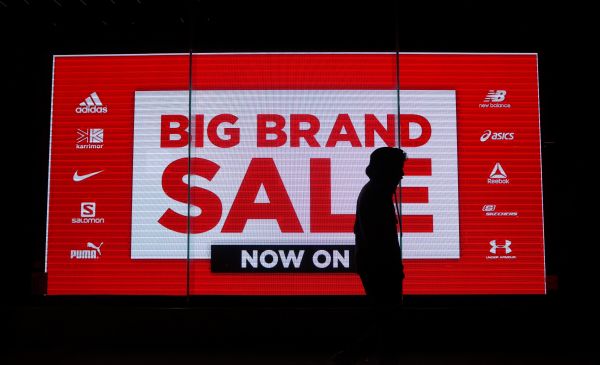Branding Strategy Insider helps marketing oriented leaders and professionals like you build strong brands. Readers know, we regularly answer questions from marketers everywhere. Today we hear from Cathy, a marketing executive from Auckland, New Zealand has this question about brand architecture strategy.
I read your definition of Brand Architecture in response to Anton with interest, but I find it to contradict what you were saying only yesterday, about positioning a product that will take sales off an existing brand (your example Budweiser and Budweiser Light). Perhaps if you could use the example of Budweiser and how to apply the rules of engagement to the brand it may clarify this for Anton and us all. Perhaps if you could give us examples on each of the points and how if you were brand manager for Budweiser you would do it differently.
Cathy, thanks for your note. To clarify, you reference an earlier post by my Branding Strategy Insider co-author Al Ries. To your question – line extensions can increase sales for a brand by making its products appealing to additional customer segments. The trick is for the line extension to make the brand relevant to new markets while not repositioning the core brand in a negative light and while not resulting in too many traded sales with the core brand. Poorly conceived line extensions can increase sales initially but then ultimately spread sales out over more sku’s decreasing the brand’s cost efficiency.
An even worse scenario is when the line extension repositions the core brand in a negative light, such as Fat Free Fig Newtons Cookies (Does this mean that the regular Fig Newtons are loaded with fat?) or Bayer Aspirin-Free Pain Relief. (I thought Bayer stood for aspirin and I thought that aspirin had few to no side affects other than increasing heart health. I guess not if Bayer is introducing Aspirin-Free Pain Relief. Bayer’s competitors must be on to something.) Another problem is when a brand moves resources from the core brand to introduce the new brand, undermining the sales potential of the core brand. (This happened to Coors when it introduced Coors Light.)
Finally, sometimes a brand introduces an extension that invites competition. American Express did this when it introduced its Gold Card. Before it did this, it was absolutely the premium brand in the credit/charge card market. After that, the premium designation was “Gold” (and later “Platinum”), which any competing brand could also offer with a similar bundle of benefits. That move invited American Express’ competitors to enter its premium market.
So, when does a sub-brand make sense? When the core brand does not really resonate with a new market that it wants to reach. Two sub-brands worked very well for Hallmark when I was there. Shoebox (actually endorsed by Hallmark — “A tiny little division…”) was the brand that could say the irreverent things that the Hallmark brand couldn’t. We created the Mahogany brand to appeal to the African American market when Hallmark had little credibility in that market. The Mahogany business unit was run by an African American and staffed by many other African Americans.
Sometimes a separate brand is warranted, such as Disney’s Touchtone Pictures. “R” rated films just don’t fly under the Disney (Fun family entertainment) identity.
Sub-brand structures that seem to work really well: Toyota Camry, Prius, Highlander, RAV4, etc.; Honda Accord, Civic, CRV, etc.; Sony Walkman, Trinitron, Bravia, etc.; Apple iPod, iTunes, iPhone, etc. Often, when brands try to move upscale or downscale, separate brands are often the answer, such as Honda’s Acura and Toyota’s Lexus.
Some sub-brands result from the core brand being extended into new product categories while others result from the core brand being extended into new customer market segments. To me, designations such as “Light” or “Gold” are more line extensions or variations on the core brand’s theme than they are full blown sub-brands.
Cathy, I hope this brings the clarity you were looking for.
Have a question related to branding? Just Ask The Blake Project
The Blake Project Can Help: The Brand Architecture Workshop
Branding Strategy Insider is a service of The Blake Project: A strategic brand consultancy specializing in Brand Research, Brand Strategy, Brand Licensing and Brand Education





5 comments
Fabio
September 15, 2009 at 5:07 am
As far as I can tell I would not consider these vehicle models as Sub-brands:
Sub-brand structures that seem to work really well:
Toyota Camry, Prius, Highlander, RAV4, etc.; Honda Accord, Civic, CRV, etc.; Sony Walkman, Trinitron, Bravia, etc.; Apple iPod, iTunes, iPhone, etc.
IMHO I would consider sub-brands only Bravia, Trinitron, iPod and iPhone on that list. Why did u consider i.e. RAV4 or Accord as a sub-brand?
Thanks.
Cathy
September 15, 2009 at 5:46 pm
Thank you for your reply, this does clarify things in terms of how you would classify line extensions versus brand extensions, a fine line. I do find your articles of use as the marketing department here consists of myself and one other doing the same thing for our footwear division so picking peoples thoughts and external resources are extremely important.
Many thanks for you help.
Cathy
Kevin Williams (@brandlessons)
September 16, 2009 at 10:34 am
I think this was a great post on the clarification of what the term sub-brand means and it’s function to the core brand. I wish you would expand a little bit more on the expansion of the core brand in how it should enhance and not detract from the core brand’s messaging and position. (i.e Coors Light)
Brad VanAuken
September 19, 2009 at 6:05 am
Fabio, regarding vehicle models as sub-brands, clearly Honda or Toyota (or Ford) are brands. If people think of a sub-entity under the larger brand umbrella and if that sub-entity has a name and an identity, I consider that to be a sub-brand. Clearly one can picture a Prius or a Highlander. Each is readily identifiable. And each has a different target market, because it appeals to a different set of customer needs. That, by my definition is a sub-brand.
Brad
Fabio
September 20, 2009 at 10:33 pm
Thank you Brad.
Comments are closed.